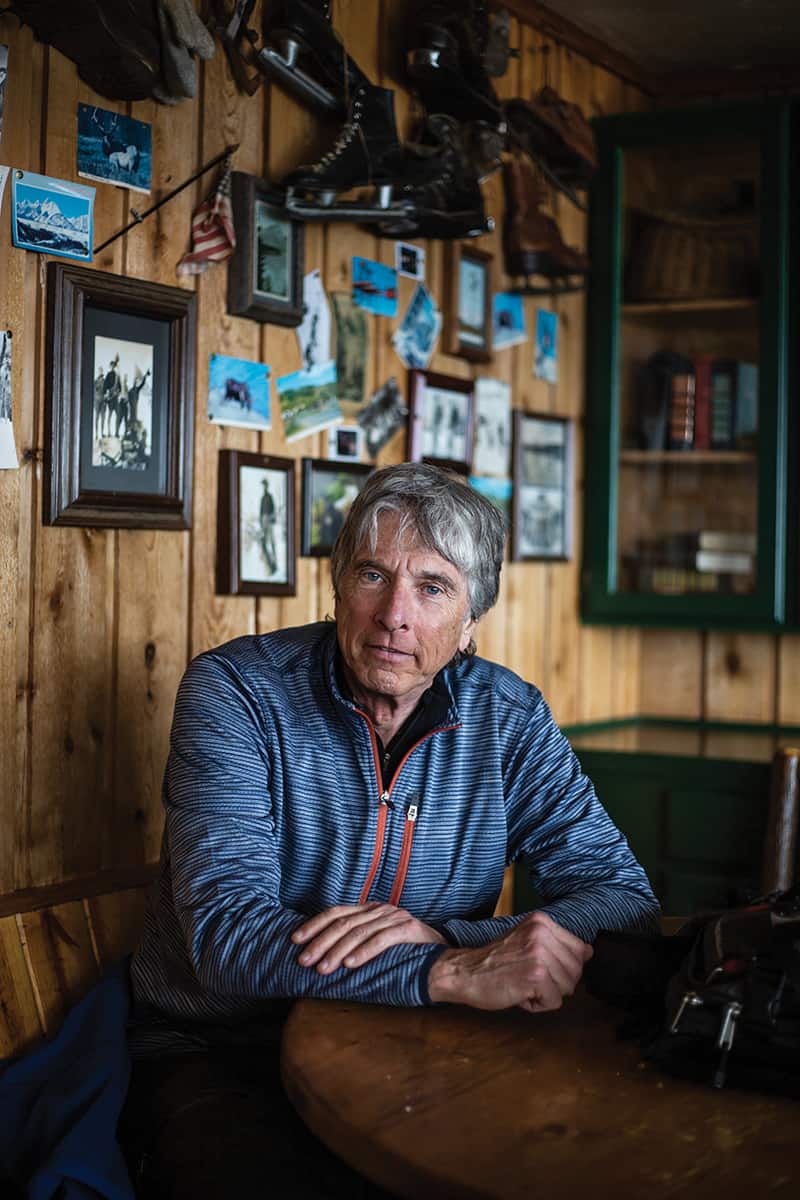Read The
Current Issue
Photo Gallery // The Original
Wade McKoy is Jackson Hole’s original ski photographer.
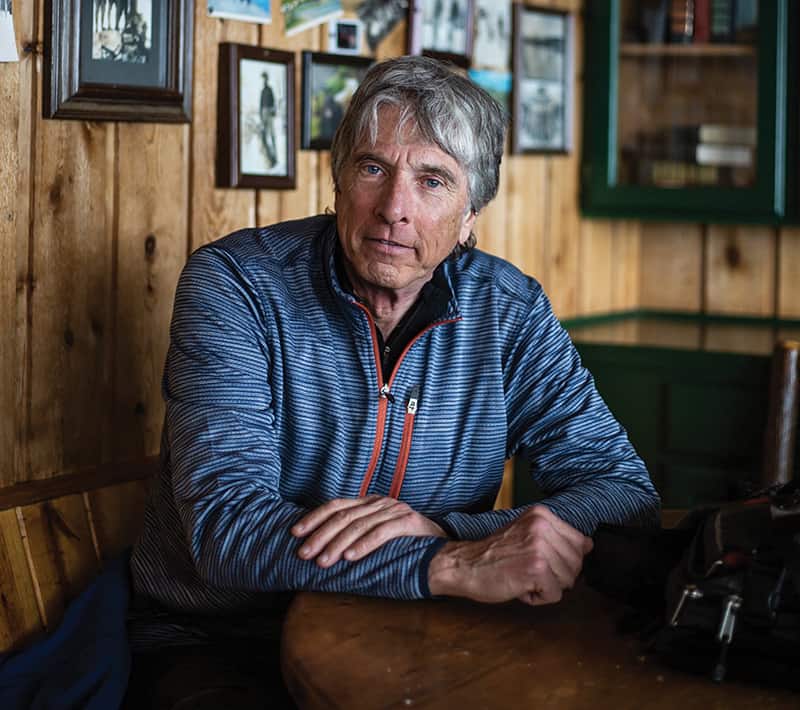
Photo by Ryan Dorgan
NOWADAYS THERE ARE about as many adventure photographers living and working in Jackson Hole as there are mountains surrounding the valley. Wade McKoy was the first though. “I started with a hand crank camera,” he says. “The next year I got an auto winder that went 2.5 frames per second, and that was like magic.” It was the mid-’70s and McKoy had recently moved to Jackson to learn how to ski; he had his first photograph published in Powder magazine in 1976 or 1977. A couple of years later, McKoy shot a feature for Powder. “They had told me they were going to hold it a year, but late one season a friend comes walking up to me in the base area with his copy of the magazine opened to the lead spread of the article and I just about fell down,” McKoy says. “I was so happy I started jumping up and down.”
More than forty years later, McKoy has lost count of how many of his images have been published in magazines, ad campaigns, catalogs, and online. He has traveled to China, Alaska, South America, India, and Europe writing about and shooting ski mountaineering expeditions. He still loves making photos in Jackson Hole though. “This is a great factory for beautiful images; it’s got all the elements—terrain, snow, and athletes, and now, more photographers than just me. I was lucky to be here when no one else was here and I don’t take that for granted. That was a blessing, and I fully embrace all the great shooters and great skiers we have now. There is certainly more than enough terrain to go around.” Here McKoy, who founded the annual skiing-centric magazine The Village Focus with Bob Woodall in 1983 (they changed its name to Jackson Hole Skier in 1987), shares some of his favorite Jackson Hole images and the stories behind them.
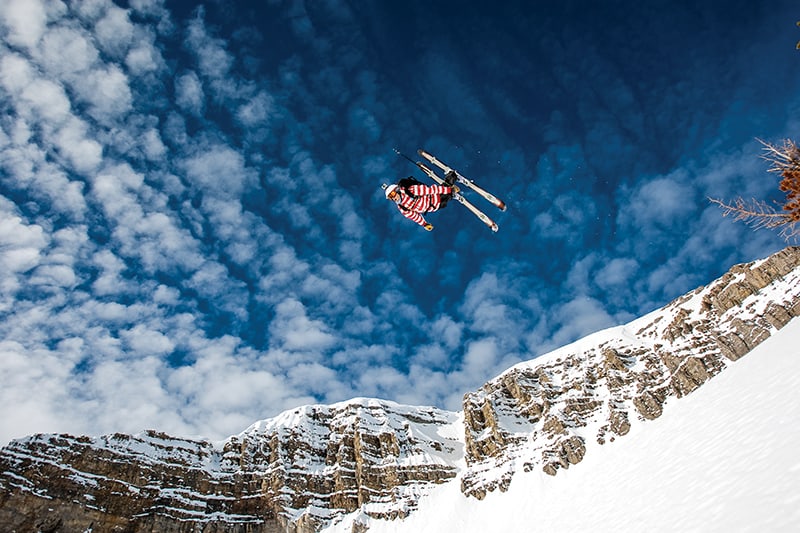
“My kind of thing had always been to keep moving, shoot, ski down—keep it flowing,” McKoy says. “But some of the newer skiers love building kickers.” This kicker is below the south side of Cody Peak; the run Once is Enough is in the background. McKoy positioned himself below the jump, shooting the half dozen skiers who were lapping the kicker, constantly adjusting his position while imagining the trajectory of the next skier. (“The only time you’d get that big a posse is when shooting stills with a film crew,” McKoy says. This was a KGB Productions shoot.) “When Andrew did this huge layout front flip I was standing in exactly the right place. The clouds were magic and really kind of make the shot. And Andrew, of course, in his graphic red jersey.” This is the lone image in this photo essay taken with a digital camera, which McKoy started shooting with in 2005.

The backside of Grand Targhee has some huge cliff bands, including this particular launching point, which is called the Diving Board. “The Diving Board is one of the really primo things to drop off of,” McKoy says. “I’d shot it a number of different ways and I always wanted to get a little wider. I wanted to get a totally new and different shot and finally bought a 15mm super-wide-angle lens that was rectilinearly corrected. I didn’t like the look of fish eye. I wanted straight lines, not curves. It turned out to be a magic photo. The human eye sees at 52 mm if translated to a camera. I was standing there looking at the scene and it was pretty cool, but I looked through my camera and it is very cool.” The North Face used this photo as a 10×12 foot banner that hung in Teton Village Sports and then in Jackson Hole Sports. “It was a really successful picture,” McKoy says.
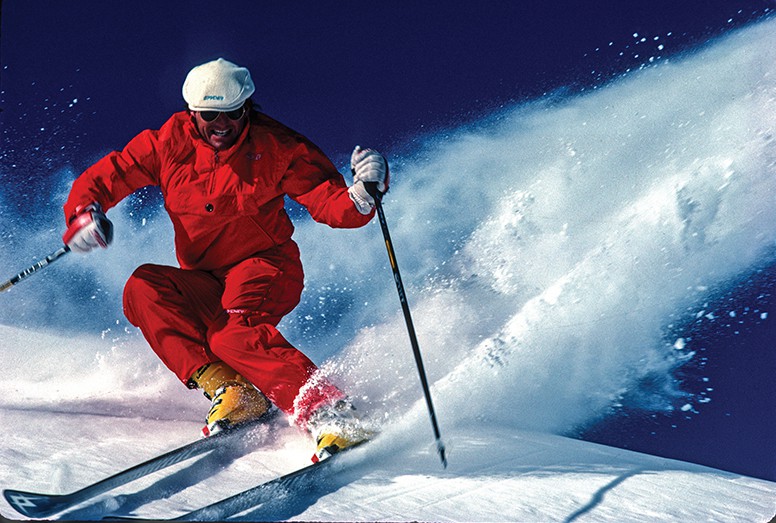
McKoy took this photo “before anyone was getting paid as a sponsored athlete,” he says. “We actually paid our skiers, but not up front. We paid them 15 percent commission on any money we made off of photographs of them.” McKoy and Leveroni, who McKoy says was “one of the best skiers on the hill,” went up the Jackson Hole tram specifically to shoot this one picture. “We had talked about the composition—blue sky, fin of hard chalky snow,” McKoy says. Leveroni skied it once and McKoy got this shot. “He remembers asking me if he needed to ski it again, but it just felt right. I knew I had gotten it the first time,” McKoy says. Leveroni didn’t ever ski wearing red or a European driving cap, but “Spyder had given him this outfit and cool wool cap,” McKoy says.
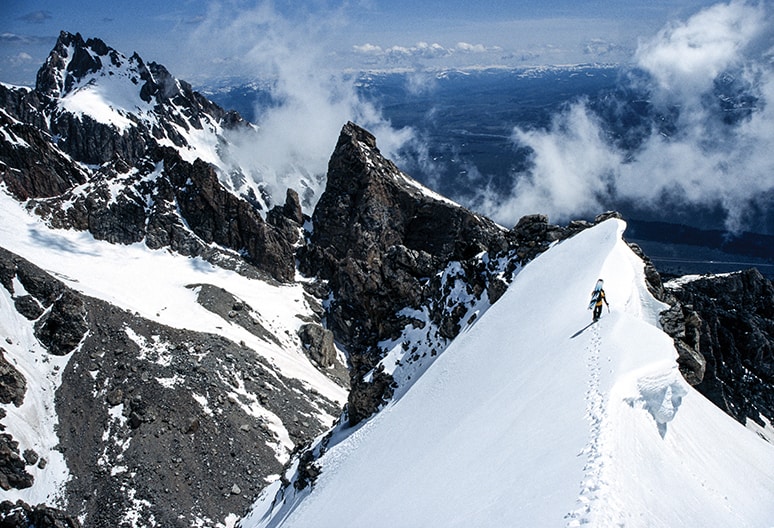
“We used to go into the Tetons in the spring every year,” McKoy says. “The spring was the only time we would be there. We’d wait until the snow was hard enough to walk on so you could walk on it in crampons—we didn’t have skins and we would be postholing if it wasn’t frozen. There weren’t many opportunities to go up in good conditions; we didn’t have all the weather info we do now.” McKoy took this image after he and Griber had climbed the Ellingwood Couloir on the Middle Teton. “When we topped out, here we saw this snowy ridge and both John and I recognized that this was a photograph we had to take,” McKoy says. “John walked out to the end of it, we shot that, and then he turned around and walked up to me so I got his front side.”

“I wasn’t supposed to be in this spot and [Hazen] wasn’t supposed to ski here, but things happened to conspire to make this picture happen,” McKoy says. The plan when McKoy, Hazen, Mason Cassidy, and photographer Chris Figenshau set up camp below the Teton Glacier was for—the next day—McKoy to shoot the other three from below with a 600 mm lens as they climbed up to the Grandstand and a series of ledges that wrap around toward the Black Ice Couloir. But McKoy stayed in camp the next day and conditions did not allow the other three to reach the Grandstand. “The snow was rotten and sugary and unclimbable,” McKoy says. Still, McKoy had his camera on them and was shooting what they were able to ski. “I see Bissell head over to the [Teton] Glacier terminus; the other two are headed the more usual route. He took his time and was careful skiing down through it and I was taking all these photos and was just amazed. He wasn’t planning to ski that, and I wasn’t planning to stay in camp. If I was where I had meant to be, I wouldn’t have been able to see him at all.”
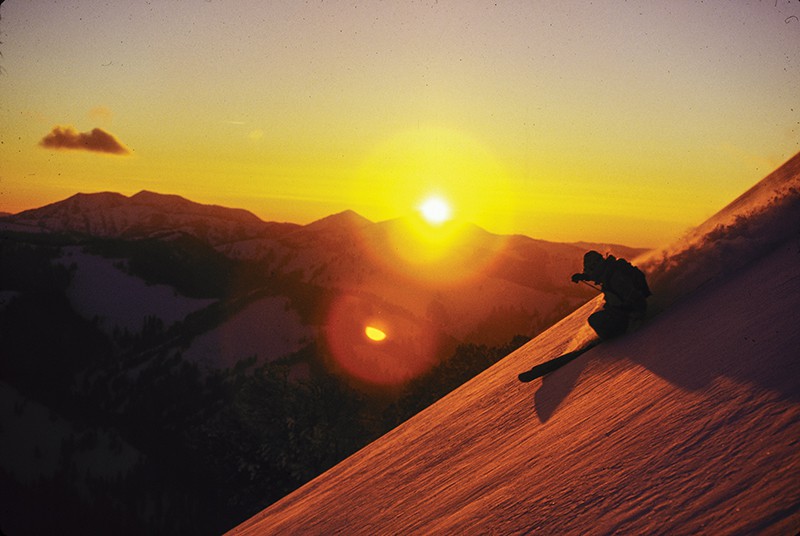
McKoy says he and Jason Tattersall produced “some really wonderful images together. Jason has a very artistic mind and could have been a photographer. He was enthusiastically focused on getting a great shot.” Here, Tattersall skis on Teton Pass at sunset. “You can’t shoot at sunset at the Village,” McKoy says. “If you wanted to keep shooting, the Pass was the closest place to go, and back then we could go up there at sunset and there was still untracked snow. It’s hard to find that anymore.” JH

